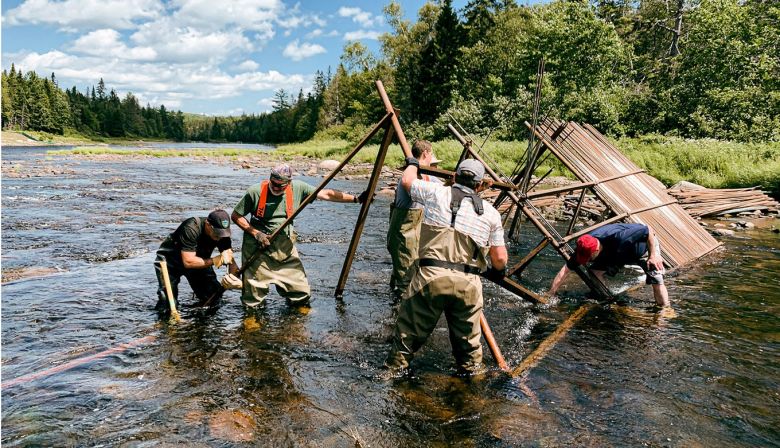Terry Sappier is one of the women who occupied Miramichi Lake in August to halt the Working Group on Smallmouth Bass Eradication’s plan to treat the lake using a product with the active ingredient rotenone.
Rotenone is a natural compound, most commonly used as an insecticide and a herbicide, that is toxic to some aquatic life.
The working group’s plan was originally scheduled to take place on Aug. 17.
Sappier said she and other Wolastoqiyik people had concerns because their communities were not properly consulted on the project. The women’s protest delayed the plan.
The first meeting between the groups is set to take place in Fredericton next week after a lawsuit brought against the women by the Atlantic Salmon Federation was dismissed, according to Sappier. During the meeting, Sappier said they hope to show the working group there are alternatives to using the rotenone treatment.
“Poisoning Miramichi Lake isn’t the solution,” she said.
Sappier reiterated her belief that one meeting isn’t enough time for proper consultation, saying more work needs to be done to meet with members of other First Nation communities.
The Mi’gmaq Chiefs of New Brunswick issued a statement Aug. 20 supporting the project, while acknowledging talks remain ongoing between them and Wolastoqiyik leaders to determine the best course of action.
While the working group previously told the Leader they planned to move ahead with their plans to treat the lake in September, on Thursday, spokesperson Neville Crabbe said there is currently no date set for their plan to make time for further consultation.
“It looks like we will have some additional community sessions in the coming weeks as well,” he said.
Crabbe told the Leader non-gill-breathing organisms have a much higher toxicity threshold to rotenone, so there are no anticipated negative outcomes for non-fish species.
“Even migratory fish species are expected to rebound very quickly,” he said.
Sappier and some other Indigenous people who took to the lake still have concerns about how the use of the chemical will impact the ecosystem.
Crabbe said during next week’s meeting, their first goal will be to listen to those concerns and any questions people have.
“Then [we will] share the information. A lot of the concerns that we heard about water quality, effects on mammals, birds, amphibians and such, we have over several years of designing and implementing this project answered those questions and have a lot of science and experience to back it up,” he said. “We are really looking forward to putting that information forward.”
